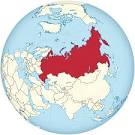This post is not about the man, Liberace, but about a GLARING ERROR he made before treating the TV audience to his take on the classic Strauss “Beautiful Blue Danube Waltz”. See for yourself:
You saw the problem, right?
Of course, I am referring to the introductory comment: “…I would like to take you back…many hundreds of years ago to that wonderful, romantic night when Johann Strauss first introduced the waltz…”. Here is the GLARING ERROR: Johann Strauss II premiered “The Beautiful Blue Danube Waltz” in 1867, just 86 years (NOT many hundreds of years) prior to Liberace’s 1953 TV show.
I sort of want my son to have a more accurate sense of when important musical compositions were written, so I have put together a simple chart of classical pieces that he is familiar with, and paired them with US Presidential administrations. This will give us both a bit of a sense of what was going on in the world when each piece was written, and remind us that many great compositions are not as old as we think (or Liberace thought)(seriously, I suspect a lot of people think classical music was written 500 years ago, in a galaxy far, far away).
The chart works this way:
USA Presidential Administration – 1 orchestral piece composed or premiered during that time period
George Washington – Haydn’s “Symphony No. 94” (Surprise Symphony), 1791
John Adams – Beethoven’s “Piano Sonata No. 14” (Moonlight Sonata), 1801
Thomas Jefferson – Beethoven’s “Symphony No. 5”, 1808
James Madison – Rossini’s “The Barber of Seville”, 1816
James Monroe – Schubert’s “Marche Militaire”, 1822
John Quincy Adams – Rossini’s “William Tell Overture”, 1829
Andrew Jackson – Mendelssohn’s “Hebrides Overture”, 1830
Martin Van Buren – Chopin’s “Piano Sonata No. 2” (The Funeral March), 1837
William Henry Harrison – Wagner’s “The Flying Dutchman”, 1841
John Tyler – Mendelssohn’s “Wedding March”, 1842
James Polk – Liszt’s “Hungarian Rhapsody No. 2”, 1847
Zachery Taylor – Schumann’s “Symphony No. 3” (The Rhenish), 1850
Millard Fillmore – Verdi’s “Rigoletto”, 1851
Franklin Pierce – Foster’s “Jeanie with the Light Brown Hair”, 1854
James Buchanan – Offenbach’s “Orpheus in the Underworld” (the Can-Can!), 1858
Abraham Lincoln – Howe’s “Battle Hymn of the Republic”, 1862
Andrew Johnson – Strauss II’s “Beautiful Blue Danube Waltz”, 1867
Ulysses S. Grant – Grieg’s “Peer Gynt Suite”, 1876
Rutherford B. Hayes – Gilbert & Sullivan’s “HMS Pinafore”, 1878
James Garfield – Bruch’s “Scottish Fantasy”, 1881
Chester A. Arthur – Waldteufel’s “The Skater’s Waltz”, 1882
Grover Cleveland – Saint-Saens’ “Carnival of the Animals”, 1886
Benjamin Harrison – Tchaikovsky’s “The Nutcracker”, 1892
Grover Cleveland – Dukas’ “The Sorcerer’s Apprentice”, 1897
William McKinley – Rimsky-Korsakov’s “Flight of the Bumblebee”, 1900
Teddy Roosevelt – Elgar’s “Pomp and Circumstance, No. 1”, 1901
William H. Taft – Stravinsky’s “Rite of Spring”, 1913
Woodrow Wilson – Holst’s “The Planets”, 1916
Warren G. Harding – Berlin’s “What’ll I Do”, 1923
Calvin Coolidge – Gershwin’s “Rhapsody in Blue”, 1924
Herbert Hoover – Grofe’s “Grand Canyon Suite”, 1931
Franklin D. Roosevelt – Copland’s “Appalachian Spring”, 1944
Harry S Truman – Anderson’s “The Typewriter”, 1950
Dwight Eisenhower – Bernstein’s “West Side Story”, 1957
John F. Kennedy – Mancini’s “The Pink Panther Theme”, 1963
Lyndon Johnson – The Beatles’ “Yesterday”, 1965
Richard Nixon – Weissberg/Mandell’s “Dueling Banjos”, 1973
Gerald Ford – Williams’ “Theme from Jaws”, 1975
Jimmy Carter – Williams’ “The Imperial March” (Darth Vader’s Theme), 1980
Ronald Reagan – Andrew Lloyd Webber’s “The Phantom of the Opera”, 1986
George H.W. Bush – George Winston’s “Hummingbird”, 1991
Bill Clinton – Doyle’s “Steam Engine” (from “Sense and Sensibility”), 1995
George W. Bush – Kirkhope’s “Viva Piñata Soundtrack”, 2006
Barack Obama – Williams’ “The Adventures of Tintin”, 2011
(and yes! My son is quite familiar with all of the above pieces.)
BTW, this week we have been ALSO learning about Jacques Cousteau and Otto Von Bismarck.
Welcome to the best part of my day!
– Jane BH








